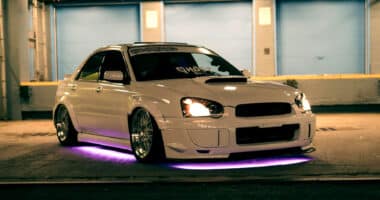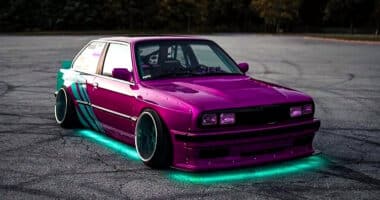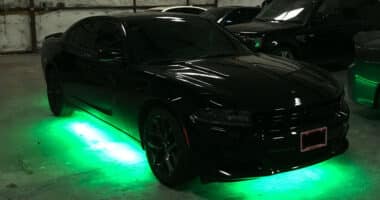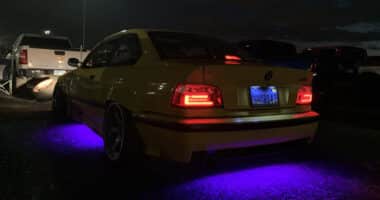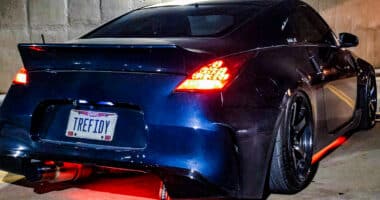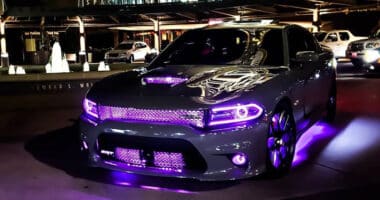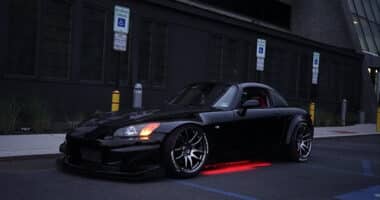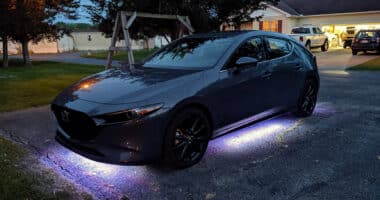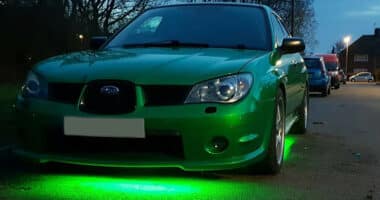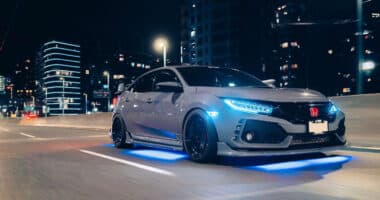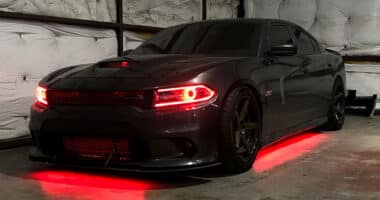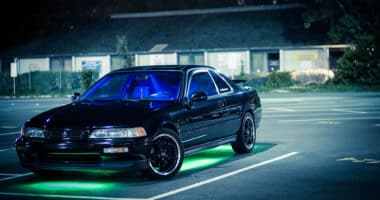Invented in the 1980s, underglow reached its peak popularity in the early 2000s, and this was at least partly due to the influence of The Fast and the Furious franchise.
Lately, however, underglow seems to be making a comeback, with more car enthusiasts running it on their cars once again. This is probably due to the use of them in NASCAR’s All-Star Race.
There are plenty of laws that determine the type of lighting you have to have on your vehicle, as well as types that are prohibited. As colored headlights and tinted tail lights are restricted, so too are underglow installs.
Types of Underglow: Neon vs. LED
Originally, underglow was provided by neon tubes. Neon can only emit red, but the addition of chemicals allowed drivers to produce other colors.
The major downside, however, is that being tubes of compressed gas, they are very fragile. You could literally go over a small speed bump and a tube would break.
Modern underglow is powered by LEDs, which are much less fragile and last way longer than their neon predecessors. LED systems can be customized and even programmed to sync with music (or light up in a pattern) using remote controls and smartphones via a Bluetooth connection.
There are LED strips, tubes, and pods. If you want to use LEDs for their greater reliability but want the classic underglow look, go for the tubes. The tubes provide the closest imitation of the original neon underglow aesthetic.
Really, there is not much reason, other than nostalgia, to run neon tubes over LEDs. LEDs are cheaper, more durable, have a longer lifespan, are more customizable in terms of brightness, colors, and patterns, require less power to run, and have a more user-friendly installation process.
Underglow on Formula Drift Cars
When using your car on the track and/or solely for off-road purposes, you can of course install underglow. One area of motorsport that has started to employ underglow is Formula Drift, or Formula D.
Formula D is obviously about skill and precision in controlling one’s car when sliding at high speeds, but it is also about providing an enjoyable and interesting spectator experience.
In 2020, Formula D began requiring drivers to use Type S lighting on both the left and right sides of their vehicles on night stages, and even officially added this to their rulebook!
Drivers have to run at minimum left and right underglow (5 feet each), but can choose to add more lighting as desired.
The Type S lighting system allows for individual customization and control of the colors emitted, too, letting each competitor have a unique lighting pattern. In fact, if drivers did not yet have lighting installed, they were provided Type S lighting free of charge.
You can imagine, if you have not seen it already, how the underglow would both enhance the spectator experience as well as make it easier to see the cars and even differentiate between them.
In low lighting conditions, especially with all the tire smoke, it can be very difficult to make out what is actually happening on track, and additional lighting no doubt helps with this issue.
Are Neon Underglow Lights Legal?
There isn’t a blanket rule when it comes to under car neon lights. Each US state is regulated differently, which makes it difficult to be sure your car modifications are legal.
The same can be said for most other countries around the world. At the very least, each country has their own set of laws, and usually provinces or states within that country has further variations to their restrictions.
A State-by-State Guide
So if you came here asking “is underglow illegal?” The answer is it depends.
Check out our guide to your specific state or country, where we do our best to give you an exact answer, as well as a link to your local traffic code or reference information.

